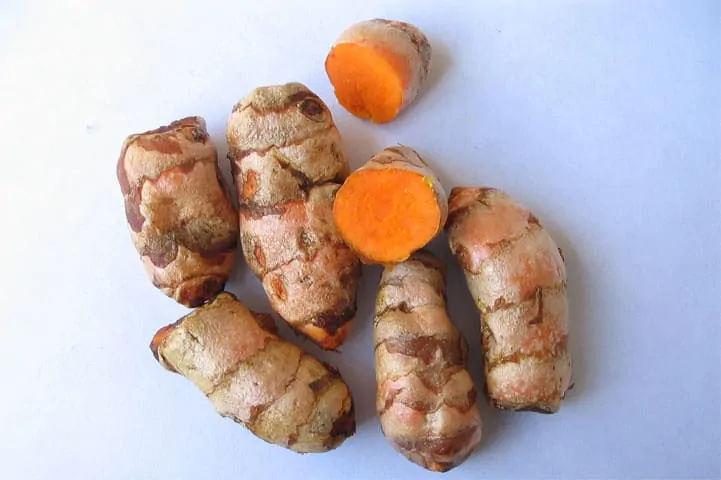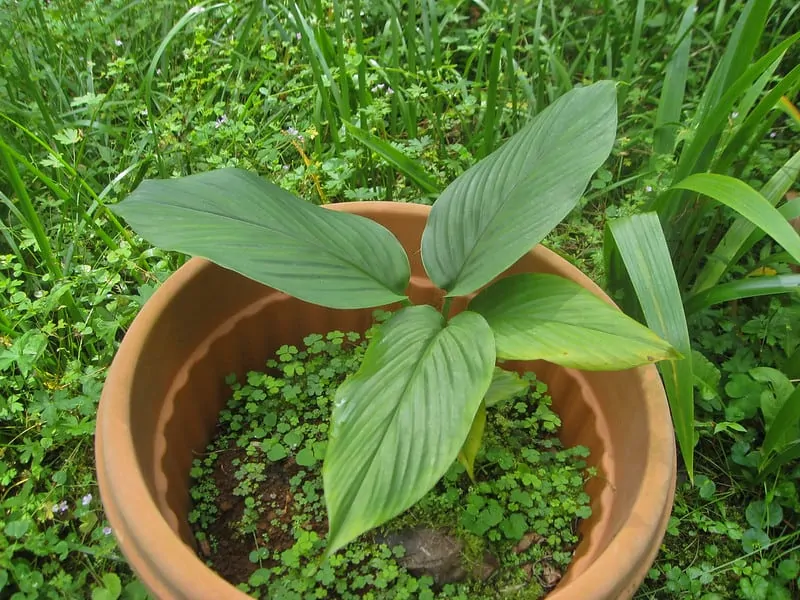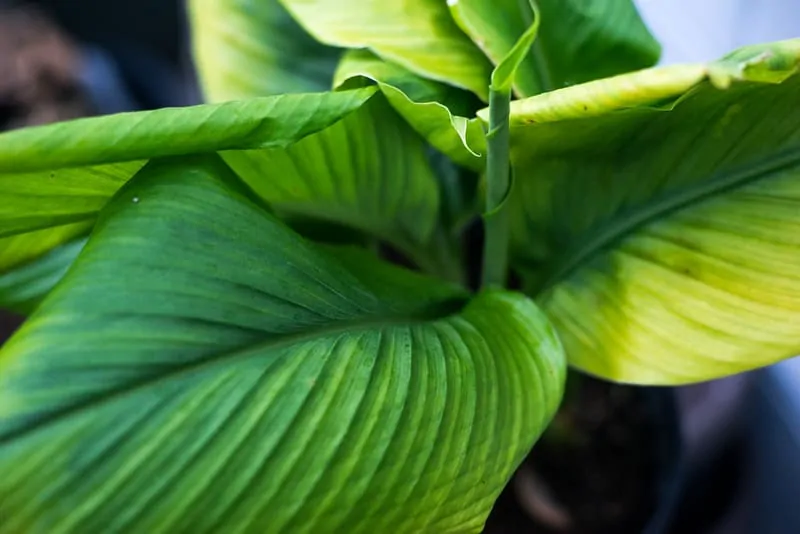How To Grow Turmeric In Your Own Garden
Here is our handy root to powder guide on how to grow your own turmeric.
How To Grow Turmeric: About The Plant
Turmeric, or Curcuma, is known for its striking orange color and distinct taste. Chefs use it as an essential spice in many dishes and you probably tasted it as well. It makes the base for curry powder and it’s added in flavored drinks. And, of course, it’s tastiest when fresh!
However, taste is not the only use for turmeric. It has anti-inflammatory and antioxidant properties, as well as the capacity to lower the risk of Alzheimer’s. You may have seen turmeric used in home-made cosmetic products. Do not use it on your skin, neither fresh nor powdered! It can irritate sensitive areas like your face and it will stain your skin for weeks.
In terms of how to grow turmeric, there are some similarities with growing asparagus, though turmeric is less pretentious. It will need almost as much space, however, and it does take some patience to harvest.
How To Grow Turmeric: Planting
Indoors
First, here is how to grow turmeric indoors. You will need a large planter or pot, ideally an 18 inches one for each rhizome. Pick out the freshest ones at the grocery store or try plant nurseries, health food stores, or Asian specific stores.
- Cut up the rhizomes, leaving 3 or 4 buds per piece. All of these pieces can then go in the same large pot.
- Plant them in smaller pots until they sprout a few good leaves.
- Bury the pieces under 3 inches of soil and water thoroughly.
- Keep warm and moist. For this, you can use the plastic bag trick we showed you when we talked about growing a lemon tree from seeds: wrap the pot in a plastic bag or cover with foil. Make sure the graining holes at the bottom are free.
- Move to a warm place with bright indirect light once there are sprouts and replant in the large pot as soon as there are a few true leaves.
Outdoors
The big enemy of turmeric is cold. The rhizomes should be fine underground even over winter if temperatures don’t drop below freezing, but once they started growing leaves, they are done for.
- Count back 10 months from an early freeze and start planting then.
- Start inside, in little pots, same as above, then replant in the garden once the risk of freezing has passed. USDA hardiness zones 8-11 can start planting directly outside, in late December to early January.
- Plant the rhizomes 5 inches deep and about 20 inches apart.
How To Grow Turmeric: Plant Care
Water
Keep the soil damp, but not soggy throughout the growing process. It’s better if you water your potted turmeric little, twice a day, than drowning it every few days. Turmeric might even benefit from a drip system or a self-watering planter, at least at first, until it outgrows it. In the big pot or in the garden, once a day watering should be enough. Mist the leaves as well, to keep the humidity up.
Light
Before they sprout leaves, rhizomes don’t need any light. This is why you can keep them in a dark room, as long as it’s warm and moist enough. They will sprout either way. Check every day and as soon as the first sprouts appear, move the pots in a well-lit place, away from direct sunlight. Adult plants need some partial sun for maximum growth, but the same windowsill that offered light in winter could be the perfect spot to get some sun in summer.
Temperature
One of the most important elements of how to grow turmeric at home is temperature. Turmeric needs warm temperatures. 77 to 85 F (25 to 30 C), so in winter at least it might be happy under a grow light. If you can ensure a constant temperature in winter, you can do without. Lower temperatures will not kill the plant, but the harvest will be smaller.
Soil
Turmeric enjoys water, but not stagnant water, so it needs sandy, well-draining soil. This is probably the trickiest part of how to grow turmeric plants. Although it can take pretty much any potting soil, it prefers a slightly acidic one. The soil also needs to be rich in organic matter, as turmeric is a heavy feeder.
Fertilization
Fertilize with an organic fertilizer during the summer, according to the instructions on the package. We recommend using a liquid fertilizer. Because it likes acidic soil, turmeric can benefit from your used coffee grounds in a slow-release bag or sprinkled on the surface of the soil. Use this trick rarely as coffee can lower the pH of the soil too much.
Pruning
Turmeric doesn’t require trimming or pruning, but if you grow it outside, you might have to deal with some weeds. Few insects also like to feed on turmeric leaves, so keep them under control with either natural or chemical insecticides. Both potted and garden turmeric are prone to rhizome rot, which can be treated with anti-fungal products or simply prevented with proper watering and draining.
How To Grow Turmeric: Care Summary
Water
Keep constantly dampLight
Bright indirect to partial sunTemperature
77 to 86 F (25 to 30 C)Soil
Rich, slightly acidic, well-drainingToxicity
All parts are safe for humans and petsDifficulty
MediumHow To Grow Turmeric: Harvest And Storage
Harvest
Wait until the leaves have gone brown and wilted, then cut them all off at 3-4 inches off the ground. Next, you can either dampen the soil very well and try pulling the whole plant out by the stems, or you can use a large, easy-to-clean surface and empty the pots there, soil and rhizomes together. We reccomend using a large trash bag to line a spot on the ground and use the second method. Pick out the rhizomes and sort them. Put aside the biggest ones, with the most buds, to grow next year’s harvest. Rinse the soil off the rest and dry them well on a piece of cloth. Once dry, you can store and use them.
Storage
Turmeric keeps very well. You can have it in your fridge as fresh rhizomes for a few months. Without water, they will wilt a little but that isn’t important. They keep their properties. Store in an airtight bag or container to keep them fresh for even longer. You can freeze turmeric as well, well rinsed, dry, and packed in airtight bags.
Alternatively, you can make your own turmeric powder. Start by boiling the fresh rhizomes until they are soft. drain and let them cool a little, then peel off the skin. Dry the peeled rhizomes in the sun or in a food dehydrator, or you can use your oven set at a low temperature. When they are brittle and easy to snap, ground them however you like.
Final Thoughts
This is overall, how to grow turmeric at home. Tweak the instructions to fit you and your house and let me know in the comments what worked best for you! Remember to wear gloves when handling, or you’ll have orange fingers instead of a green thumb!







